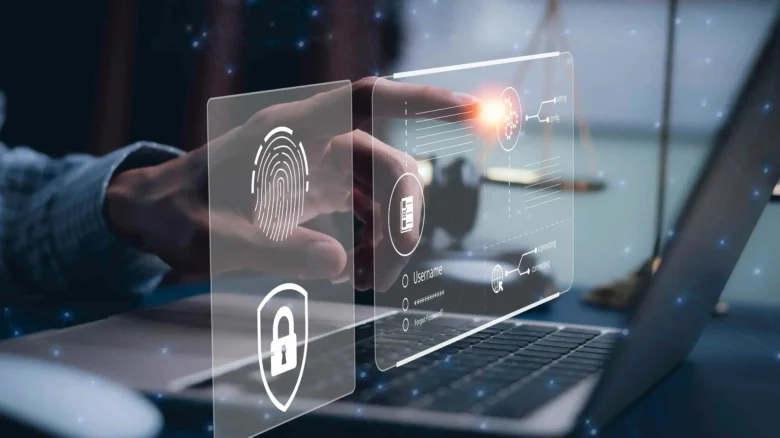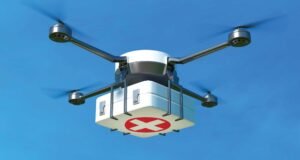Biometrics uses unique physiological or behavioral characteristics to verify identity. Unlike traditional security technologies like passwords, PINs, or ID cards, biometrics uses characteristics that are virtually impossible to copy or forget. These include fingerprints, facial features, voice recordings, retina scans, and even typing patterns. Because each person’s biometric data is unique, this technology offers a higher level of security for individuals and businesses. With the increasing digitalization of the world and the growing threat of cyberattacks, biometric systems are becoming one of the best ways to protect personal information and ensure that only authorized individuals have access to digital platforms.
Why Traditional Passwords Are No Longer Enough
Passwords and security codes have long been the most widely used method of verifying identity online. However, they come with significant problems. People often People often use the same password for multiple accounts or choose simple passwords that are easy to remember but equally easy for hackers to guess. Data theft can simultaneously compromise millions of passwords, exposing people to identity theft and financial loss. While two-factor authentication is effective, sophisticated phishing attacks can still bypass it. Biometrics address this problem by directly linking security to the user’s physical identity, making unauthorized access more difficult. Biometric data is more effective than passwords in combating cybercrime because it cannot be captured, stolen, or shared.
How Biometric Authentication Works
Biometric authentication works by capturing and analyzing a user’s biological or behavioral characteristics. For example, a smartphone with a fingerprint sensor stores the unique pattern and ridges of the user’s finger. The device securely stores this data as a mathematical model. When the user attempts to unlock the phone or open an app, the system verifies the user’s identity by comparing the active fingerprint with the stored data. The same principle applies to facial recognition (which maps key facial features) and speech recognition (which detects different tones and voice patterns). These actions take only seconds and provide a seamless and secure user experience.
The Growing Use of Biometrics in Everyday Life
For millions of people worldwide, biometrics have become an integral part of daily life. Most new smartphones, computers, and tablets now offer fingerprint or facial recognition or online payment options. Banks and other financial institutions use biometrics to ensure customers are who they say they are when logging in or making transactions. Airports use facial recognition to expedite security checks and boarding. Schools and businesses also use biometric attendance systems to track attendance and keep everything running more smoothly. Biometrics are becoming increasingly popular because they improve security and streamline processes, eliminating the need to remember multiple passwords or carry ID.
How Biometrics Improve Cybersecurity
As more personal and financial activity takes place online, cybersecurity risks are rapidly increasing. Biometrics improve security by providing a strong and virtually impenetrable form of identity verification. Hackers cannot copy or falsify biometric information because it is unique to each person. Even if someone were to hack the system, they would still need the user’s physical presence to bypass biometric authentication. This feature makes it harder for cybercriminals to steal data, commit fraud, or access systems they shouldn’t have access to. You can also combine biometrics with encryption and other security measures to create a multi-layered defense, providing better protection against even the most sophisticated threats.
Biometric Technology in the Workplace
BBiometric technology is being widely adopted in workplaces worldwide to enhance security and productivity. EEmployees can use fingerprints or facial recognition to enter office buildings, log into systems, or record their attendance instead of using standard access cards or PINs. TThis technology reduces the risk of unauthorized access to office buildings and prevents issues such as “clocking in for someone else,” where one employee clocks in for another. BBiometric systems also provide HR departments with accurate timekeeping information, which simplifies their work. TThese technologies help companies create a safer and more inclusive work environment, ensure clear accountability among employees, and seamlessly integrate safety with security.
Privacy and Ethical Issues
Biometrics offer many benefits but also raise important questions about privacy and data security. Biometric data is unique, permanent, and cannot be altered, even if it is stolen or misused. If biometric databases are improperly stored or hacked, the private information contained within them can be compromised, potentially leading to a significant privacy breach. Furthermore, there are concerns that governments or companies could use facial recognition technology to monitor or exploit people. A Addressing these issues requires the implementation of strict regulations, encryption standards, and ethical principles. Users must always be responsible for the collection, storage, and sharing of their biometric data. R Responsible implementation is essential to ensure that biometric systems enhance security without violating personal privacy.
Conclusion
Biometrics is transforming digital security by replacing traditional password-based systems with more advanced and personalized methods for verifying identity. Biometrics ensures that only authorized individuals can access sensitive information, including data from smartphones, banks, healthcare institutions, and government agencies. While privacy and data protection concerns remain, biometrics can be one of the most secure technologies available if used responsibly and properly regulated. As the world becomes increasingly digital, the demand for effective and user-friendly security solutions is expected to rise. Biometrics offers a balance between security and ease of use, and it sets a new standard for cybersecurity.
FAQs
1. What is the purpose of biometrics?
Biometrics is widely used in smartphones, banking, healthcare, and government services, among many other sectors, to verify people’s identities and ensure their security.
2. What is the difference between biometrics and passwords?
Biometric data, such as fingerprints or facial features, is unique to each individual and cannot be easily stolen or copied, unlike passwords.
3. Are biometric systems completely secure?
Biometric systems are very secure but can still be vulnerable if the data is not stored properly. To ensure security, you must use strong encryption and handle the data responsibly.
4. Can biometric data be hacked or stolen?
While it is possible for biometric data to be hacked or stolen, such incidents occur less frequently than with regular passwords. If biometric data is properly encrypted and stored locally, it is much more difficult to obtain or misuse.
5. What does the future of biometric security look like?
Biometric technology enables stronger recognition systems, multi-factor authentication, and integration with emerging technologies such as artificial intelligence and blockchain to further enhance digital security.




